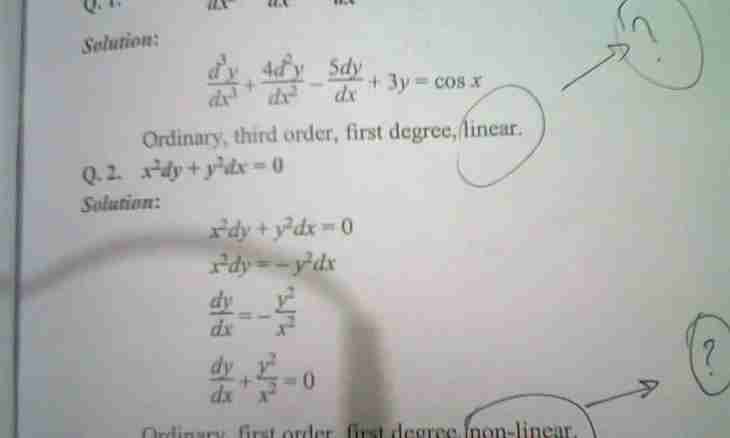The uniform system of the linear equations means the fact that the free member of each equation is equal in a system to zero. Thus, this system represents linear combinations.
It is required to you
- The textbook on the higher mathematics, the sheet of paper, a ball pen.
Instruction
1. First of all, pay attention that any uniform system of the equations always in common that means that it always has the decision. It is proved by determination of uniformity of this system, namely zero value of the free member.
2. One of trivial solutions of such system is the zero decision. To make sure of it, substitute zero values of variables and calculate total amount in each equation. You receive the correct identity. As free members of a system are equal to zero, zero values of the variable equations are one of a set of decisions.
3. Find out whether there are other decisions at this system of the equations. For this purpose you need to write down a system matrix. The matrix of a system of the equations consists of coefficients. facing variables. Number of a matrix element comprises, first, number of the equation, secondly, number of a variable. It is possible to determine by this rule to what place of a matrix it is necessary to deliver coefficient. Notice that in case of the solution of a uniform system of the equations there is no need to write down a matrix of free members because it equals to zero.
4. Lead a system matrix to a step look. It can be reached, applying the elementary matrix transformations consisting in summation or subtraction of lines and also in multiplication of lines by some number. All listed operations do not affect result of the decision, and just allow to write down a matrix in a convenient look. The gradualness of a matrix means that all elements which are located below the main diagonal have to be equal to zero.
5. Write down the new matrix received as a result of equivalent transformations. Rewrite the system of the equations, proceeding from knowledge of new coefficients. You have to receive in the first equation the number of members of a linear combination equal to total number of variables. In the second equation the number of members have to be one unit less, than in the first. The latest equation of a system has to contain only one variable that allows to find its value.
6. Define value of the last variable from the last equation. Further substitute this value in the previous equation, finding thus value of a penultimate variable. Continuing this procedure over and over again, passing from one equation to another, you will find values of all necessary variables.

